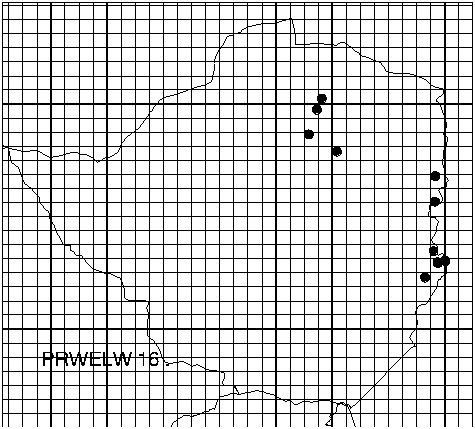
Home
Mission
Overview of Project
Project Staff
Sponsors
Achievements
Checking, Illustrations
Upcoming Activities
Id and Species Lists
Protea Information
Protea Gallery
Growing Proteas
Interim Dist. Maps
Publications
Afrikaanse Inligting
![]()
IDM Zimbabwe - Dwarf Savanna Sugarbush - Protea welwitschii
The Savanna Sugarbushes are characterized by their hairy young stems. Flowerheads are medium-sized (about 50 mm across). The involucral bracts are generally covered with silky hairs. The petals are hairy, 20-50 mm long. Styles are more than 30mm long, usually straight or slightly curved, as long or longer than the involucral bracts. Both species produce flowerheads in clusters at the end of the branch tip, but Pr gaguedi does this only rarely.
Protea welwitschii - Dwarf Savanna Sugarbush Stems with dense, long, white or brown hairs, glaucous when mature. Leaves with dense, white or brown hairs, hairless when mature except at bases. Flowerhead in clusters of 3-4, strong sickly sweet, honey-like odour. Involucral bracts sparsely to densely covered with white to brown silky hairs. Petals 20-50 mm long. Extremely variable.
This is the smaller of the two species in most of its features. The easiest feature to recognize is the broad leaves (leaves 2-5 times longer than broad, up to 60 mm wide), with a more rounded base. In addition, the hairs on the leaves (some always persist, even on fairly old leaves – look on the veins and stalk) and on the outer involucral bracts are brown. The flowerheads tend to be clustered at the ends of branches.
This is a very variable species. Beard recognized several subspecies and varieties, all sunk by Chisumpa and Brummit and resurrected by Beard. Two of the forms occur in Zimbabwe, but they are not easy to separate, and their use can be questioned. This is especially questionable given the large amount of variation in the species. We will keep an open mind, allowing atlassers to determine if they wish to use the varieties. If you are uncertain or disagree, please use the code Pr welw. You can use the Additional Remarks Box to express further ideas.
Beard recognized the following varieties. However, this species is extremely variable with most populations different to some degree from neighbouring ones. Brummit and Marner have sunk these these. If you feel strongly on the matter please atlas this species either as Pr welw (no varieties) or include the varieties in the subspecies code as follows (Note – don’t use "G"):
Heads medium-sized (40-60mm long).
Pr welw L Protea welwitschii var. glabrescens occurs in sandy flats. The plants are small 1-3m tall, with flowerheads 40-60mm long, frequently clustered. Leaves with very short, flat hairs.
Pr welw O Protea welwitschii var. goetzeana occurs in sandy flats. The plants are small 1-3m tall, with flowerheads 40-60mm long, seldom clustered. Leaves covered with hair. This is a highly variable taxon and is the dumping group within the species.
Heads small (30-50mm long).
Pr welw M Protea welwitschii var. melliodora occurs in grassy dambos on the edges of Miombo and in Sandveld. It is smaller – rarely exceeding 2m tall, usually branched. Flowerheads 30-50 mm long, often clustered in 2-3. Leaves hairy. This variety grades into glabrescens in the south.
A solid black dot indicates where the species is found.
